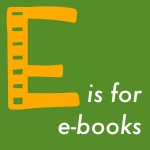Why create and use e-books in the classroom?
Resources like e-books are a common “first step” when we think about integrating technology into the classroom. However, simply substituting an e-book for a traditional book ignores the opportunity to shift towards more student-centered practices. In a recent article, Chronis Kynigos reported on a joint effort between teachers and programmers to develop a “C-book;” an e-book that implements elements of constructionism.
The considerations for design found in the study are useful as teachers consider building and using digital resources.
 Whenever planning anything for the classroom, from digital technology to personal discussion, it is important to consider the student experience. Kynigos points out that with books, and many e-books, the student has a passive role. We can extend this to some video resources as well. Just because information is presented in a dynamic way does not mean that the underlying methods of teaching and learning have changed. Students need to be be actively participating in the construction of their own knowledge.
Whenever planning anything for the classroom, from digital technology to personal discussion, it is important to consider the student experience. Kynigos points out that with books, and many e-books, the student has a passive role. We can extend this to some video resources as well. Just because information is presented in a dynamic way does not mean that the underlying methods of teaching and learning have changed. Students need to be be actively participating in the construction of their own knowledge.
The C-book concept uses interactive widgets where students to more than just demonstrate that they have listened or read, but through interacting with the widget actually build up their own learning.
From e-books to “C-books”
A second and related consideration is how students and their knowledge change as they interact with a resource. Many apps compensate for these changes by using things like levels, where the tasks get more difficult or complex. As learners change and develop, it also presents the opportunity to bring new tools and resources into the classroom, so that students can continue to develop new skills and build connections across experiences.
In the C-book design process, the teachers and developers pushed the language and the levels of interaction as the book continued. In order for students to make sense of later components, they relied on what they had done previously.
Giving construction duties over to students
Another way to push thinking around e-books in the classroom is to allow students to create the books themselves. Edmunds Middle School educator Laura Botte had students demonstrate their science learning with this type of authentically useful artifact.
Using constructivist thinking to consider the e-book is useful
It not only helps to view these resources through a more critical lens, it also allows us to take this lens and apply it to the selection and implementation of all types of digital resources in the classroom. As teachers and developers, we can choose and create resources that change as learners change. We can also make space for students to create their own resources to demonstrate their learning. Not only can we engage with these design principles, we can encourage students to do the same, and push their critical thinking.
Need to catch up on your edtech ABCs? Check out the full series here.



#TheABCsofEdtech: E is for e-books …or are they C-books? @molofson explains. http://t.co/aiEg6jQsYv http://t.co/M6JdkXsKqg
E is for e-books …or are they “C-books”? ABCs of EdTech http://t.co/msz93ziMcb via @innovativeEd
RT @innovativeEd: #TheABCsofEdtech: E is for e-books …or are they C-books? @molofson explains. http://t.co/aiEg6jQsYv http://t.co/M6JdkXs…
For the afternoon crowd: re-considering #eBooks … as “C-books”: http://t.co/YT57donDt2
E is for e-books …or are they “C-books”? http://t.co/BmNLscwYrb via @innovativeEd